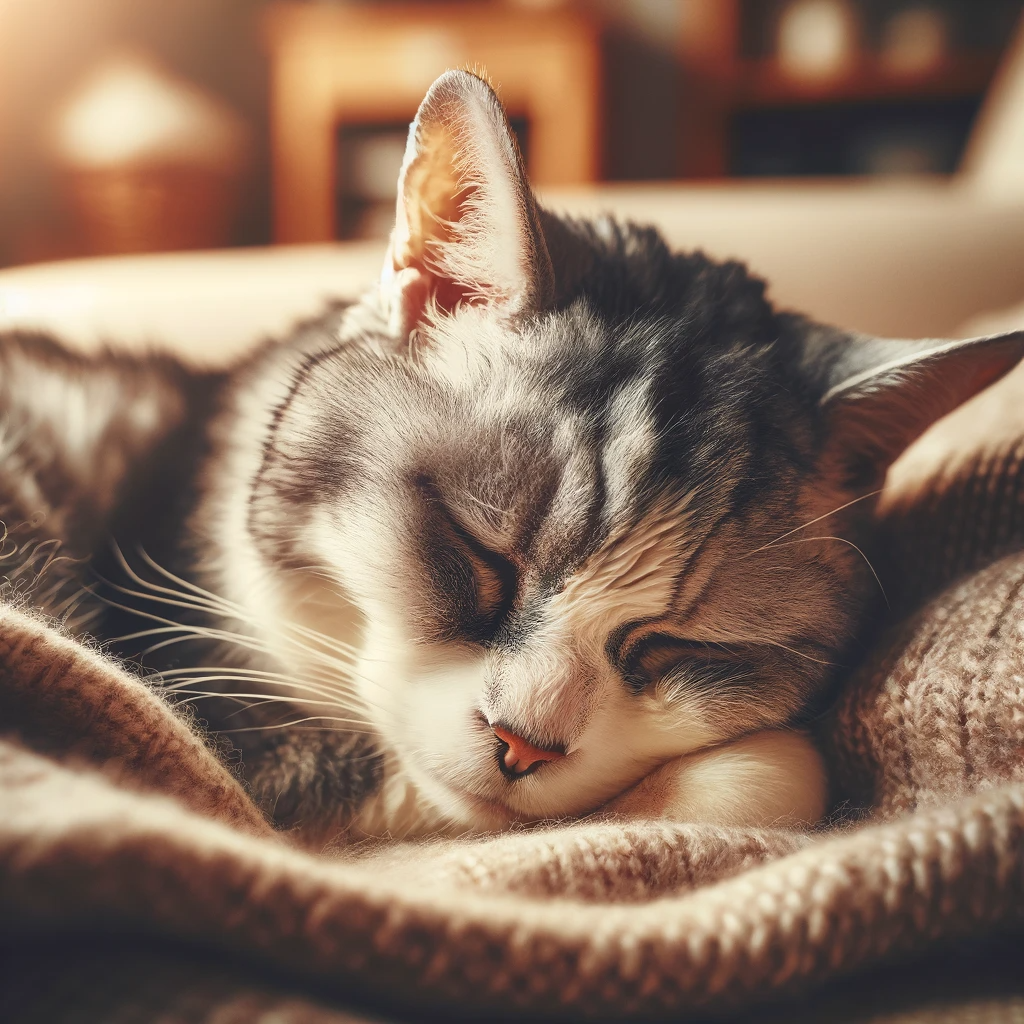Understanding Hyperthyroidism in Cats: Symptoms, Diagnosis, and Treatment
Introduction to Hyperthyroidism in Cats
Hyperthyroidism is a condition that has become increasingly common among the feline population, especially those advancing in age. It involves the overproduction of thyroid hormone from the thyroid gland, leading to a series of metabolic disturbances. The significance of this condition lies not just in its frequency but in the profound impact it can have on a cat’s overall health and quality of life. Early recognition of hyperthyroidism symptoms is crucial for effective management and treatment, helping to ensure our beloved feline friends can lead healthier lives despite this diagnosis. In navigating through this condition, understanding its symptoms, causes, diagnostic paths, and treatment options becomes invaluable for pet owners. This article aims to provide a comprehensive guide to hyperthyroidism in cats, from identifying the initial symptoms to making informed decisions about treatment and care.
Identifying Symptoms of Hyperthyroidism in Cats
Hyperthyroidism is a prevalent condition in older cats, characterized by an overactive thyroid gland that leads to a series of systemic effects. The symptoms can vary widely among affected felines, making it imperative for cat owners to be vigilant. Recognizing these signs early can significantly impact the management and outcome of the condition.
One of the most noticeable symptoms is weight loss, which occurs despite an increase or maintenance in appetite. This paradoxical situation can be baffling for pet owners who see their cats consuming more food than usual but still losing weight. The reason behind this lies in the accelerated metabolism caused by excessive thyroid hormones, burning more calories than the intake.
Increased thirst and urination are also common, driven by the body’s attempt to eliminate excess hormones. This can lead to dehydration if not monitored closely, further complicating the cat’s health status.
Behavioral changes, such as increased restlessness or aggression, can be a direct result of the hormonal imbalance. Cats may exhibit hyperactivity or become more vocal, signs that are often mistakenly attributed to other causes.
A rapid heartbeat (tachycardia) is another critical symptom, which, if left unchecked, can lead to serious cardiac problems. The excessive thyroid hormone exerts a direct effect on the heart, increasing the heart rate and potentially leading to hypertrophic cardiomyopathy, a condition characterized by the thickening of the heart muscle.
Lastly, changes in the coat’s appearance, such as becoming unkempt, greasy, or matted, reflect the overall health decline in cats suffering from hyperthyroidism. This symptom, while seemingly superficial, indicates the body’s inability to allocate resources towards maintaining the coat’s condition, focusing instead on managing the internal turmoil.
Understanding and recognizing these symptoms are the first steps in confronting hyperthyroidism. Early detection and consultation with a veterinarian can lead to timely and effective management of the condition, helping to ensure a better quality of life for the affected cat. The journey through diagnosis, treatment, and care requires patience, love, and understanding, qualities that pet owners abundantly possess.
The Causes of Hyperthyroidism in Cats
The underlying causes of hyperthyroidism in cats primarily revolve around the thyroid gland, which is located in the neck and plays a crucial role in regulating the body’s metabolism. In most cases, hyperthyroidism is caused by the development of a benign tumor known as a thyroid adenoma. Rarely, a malignant tumor called thyroid carcinoma can also be the culprit. These tumors cause the thyroid gland to produce excess thyroid hormones, leading to the symptoms associated with the condition.
Environmental factors and dietary components have been investigated as potential contributors to the development of hyperthyroidism in cats. Some studies suggest that certain fish-based cat foods, high in iodine, might play a role in triggering thyroid gland changes. Additionally, exposure to environmental chemicals, such as those found in some flea and tick treatments, has also been considered a possible risk factor. However, the exact cause remains unknown, and ongoing research aims to uncover more about the factors leading to this condition.
Understanding the causes of hyperthyroidism is crucial for pet owners, as it helps in making informed decisions about their cat’s diet and environment, potentially reducing the risk of developing the condition.
Diagnosing Hyperthyroidism in Cats
Diagnosis of hyperthyroidism in cats is a multi-step process that begins with a thorough veterinary examination. Veterinarians will typically start with a review of the cat’s medical history and a physical examination, paying close attention to the thyroid gland to detect any enlargement. Blood tests are then conducted to measure the levels of thyroid hormones, including thyroxine (T4), in the bloodstream. Elevated T4 levels usually indicate hyperthyroidism.
In some cases, additional diagnostic tests such as ultrasound, scintigraphy (a nuclear medicine test), or a thyroid scan may be recommended to assess the size and shape of the thyroid gland and to identify the presence of tumors. These tests help in confirming the diagnosis and planning the most effective treatment strategy.
Treatment Options for Hyperthyroidism in Cats
Once hyperthyroidism is diagnosed, several treatment options are available, each with its own set of considerations:
- Medication: Daily oral or topical medications can effectively manage hyperthyroidism by inhibiting thyroid hormone production. While not a cure, medication can control the condition for the cat’s lifetime, requiring regular monitoring to adjust dosages. Medication may be used if the cat has concurrent renal failure because a slightly overactive thyroid enhances blood flow to the kidney therefore benefiting kidney function. The medication dose can be adjusted to adjust to the failing kidneys.
- Radioactive Iodine Therapy: Considered the gold standard for hyperthyroidism treatment, radioactive iodine therapy destroys the overactive thyroid tissue without harming the surrounding tissues. It often results in a permanent cure, with the majority of cats requiring no further treatment after a single dose.
- Surgery (Thyroidectomy): Surgical removal of the thyroid gland can be a definitive cure for hyperthyroidism. However, surgery carries risks, particularly in older cats or those with other health conditions. Post-surgery complications can include damage to the parathyroid glands and the need for lifelong supplementation.
- Dietary Management: A specialized diet low in iodine can control hyperthyroidism by limiting the amount of thyroid hormone the body can produce. This approach requires strict adherence to the diet for effectiveness and is not suitable for all cats.
Choosing the right treatment depends on the cat’s overall health, the severity of the condition, and the presence of other health issues. A comprehensive discussion with a veterinarian will guide pet owners toward the best decision for their cat’s health and well-being.
Living with a Cat with Hyperthyroidism
Caring for a cat with hyperthyroidism involves a dedicated approach to managing their health, ensuring they lead a comfortable and fulfilling life despite their condition. Regular veterinary check-ups are essential to monitor the cat’s response to treatment and adjust as necessary. These visits can help catch any potential complications early, such as heart disease, which is commonly associated with hyperthyroidism.
Diet plays a crucial role in managing hyperthyroidism. Depending on the treatment chosen, dietary adjustments may be necessary to support your cat’s overall health. For cats undergoing medication or iodine therapy, a balanced diet tailored to their specific needs can help maintain an optimal weight and support their metabolism. Pet owners should consult with their veterinarian to choose the best diet plan for their cat.
Environmental enrichment is also important for hyperthyroid cats. They may experience increased energy levels or restlessness, and providing stimulating toys, climbing structures, and opportunities for play can help manage these behaviors. Ensuring a stress-free environment is crucial for their well-being, as stress can exacerbate health problems.
Emotional support is another key aspect of care. Hyperthyroid cats may require more attention and reassurance from their owners. Regular grooming, petting, and interaction can help strengthen the bond between the cat and its owner, providing emotional stability and comfort.
When to Consider Euthanasia: Saying Goodbye to a Cat with Hyperthyroidism
The decision to consider euthanasia is one of the most difficult and heart-wrenching choices a pet owner can face. It involves acknowledging that your beloved cat’s quality of life has significantly deteriorated without the prospect of improvement. Signs that it may be time to consider euthanasia include unrelenting pain, severe lethargy, loss of appetite, inability to perform basic functions, and a general disinterest in life.
This decision should not be made in isolation. Consulting with your veterinarian can provide you with a professional assessment of your cat’s condition, potential for recovery, and overall quality of life. It’s also important to engage in open, honest discussions with family members who share a bond with the pet.
Preparing for euthanasia involves both practical and emotional planning. Your veterinarian can explain the process, ensuring you understand what to expect and how to provide the most peaceful and compassionate end for your cat. Emotionally, it may be helpful to create a space for grieving, remembering the joy your cat brought into your life, and acknowledging the depth of your loss.
Saying goodbye to a cat with hyperthyroidism, or any pet, is an act of love and mercy. It’s a decision made to spare them further suffering, ensuring their final moments are filled with peace and dignity. Grieving the loss of a pet is a personal journey, and seeking support through pet loss support groups or counseling can provide comfort during this challenging time.
Summary and Final Thoughts on Hyperthyroidism in Cats
Hyperthyroidism is a significant condition affecting cats, primarily older ones, characterized by an overactive thyroid gland producing excessive thyroid hormones. This guide has navigated through the symptoms, causes, diagnosis, and treatment options for hyperthyroidism in cats, offering insights into living with and caring for a hyperthyroid cat. We’ve also touched upon the emotionally challenging decision of considering euthanasia when a cat’s quality of life deteriorates beyond improvement.
Recognizing the symptoms early, such as weight loss, increased appetite, and behavioral changes, is crucial for timely diagnosis and treatment. Understanding the causes, though not entirely clear, involves acknowledging the potential role of environmental and dietary factors. The diagnostic process, primarily through blood tests and possibly imaging, paves the way for effective treatment options. These include medication, radioactive iodine therapy, surgery, and dietary management, each with its considerations and impacts on a cat’s health and well-being.
Living with a hyperthyroid cat requires a commitment to regular veterinary care, dietary management, and environmental enrichment, ensuring they lead a comfortable life. When all options have been explored and quality of life cannot be maintained, making the compassionate decision to say goodbye through euthanasia is a profound act of love and kindness.
In closing, hyperthyroidism in cats is a manageable condition with the right approach and care. Pet owners facing this diagnosis can navigate the challenges with the support of their veterinarians, providing their feline companions with the best possible quality of life. For additional support and resources, visit our Pet Comfort Central for comfort tips and tools, and Understanding and Preparing for In-Home Euthanasia: A Compassionate Guide for insights into making this difficult decision. Remember, the bond between pets and their owners is unique and strong; making informed, compassionate decisions is the greatest testament to this bond.
In the quiet night, a feline’s guiding light,
With gentle strokes, hearts stirred.
Each purr, a precious melody,
Their vulnerability, we see.
Medicine mixed with treats sweet,
Long nights, a vigilant care.
Our bond grows stronger,
A warm embrace, fears fade.
For every discomfort they face,
Love endures, hope remains.
To caregivers with vast hearts,
Love and dedication steadfast.
To sick cats, we give our all,
Love’s cure, we bravely give.
Other Resource
For further reading and support on hyperthyroidism in cats and related topics, consider exploring the following resource:
Visit the guidelines on feline hyperthyroidism at catvets.com.

